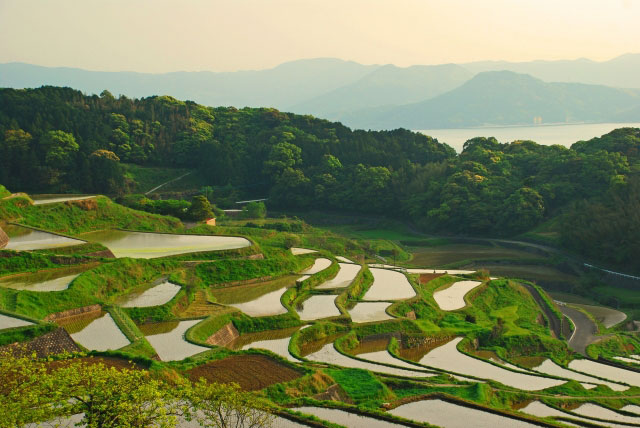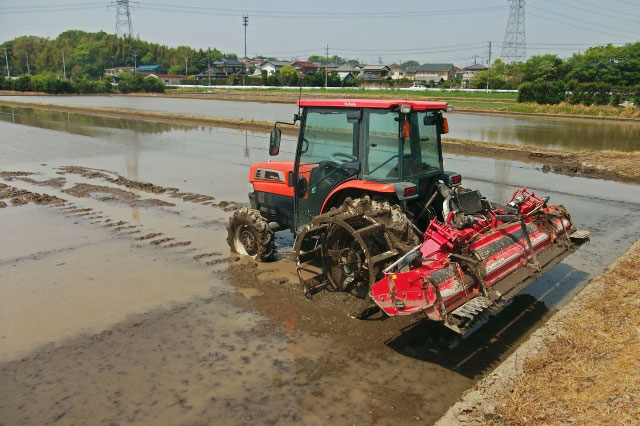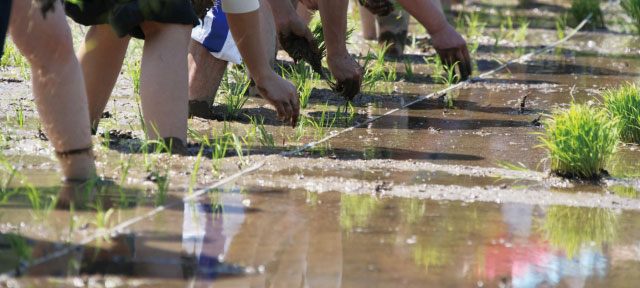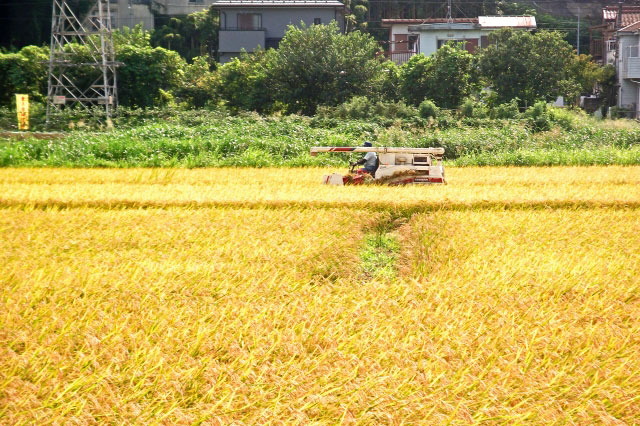
Rice, rice and more rice… we continue our series about What Is Rice Really? after having explored the plant, and short-grain, medium-grain and long-grain rice. Have you tried any of the recipes we’ve suggested yet?
While you were cooking rice, have you ever wondered how it actually gets from its beginnings as a tiny seed to your kitchen?
Growing rice—especially in Japan—is an endeavor both large and small. The careful attention that rice farmers pay to each minute detail of the rice growing process leads to the crop yields that feed the Japanese people. Farmers consider two things as they grow rice: the plant itself and the environment used to grow it.

Rice farmers care for the rice plant from dormant seed through harvested food. Rice seeds were originally gathered from wild rice plants; however, in modern times, rice seeds are carefully selected and stored from previous harvests, as well as hybridized in cultivation facilities. The type and quality of the seed is hugely important to the type and quality of the yield in any given growing season. Rice seeds are the unhulled, unprocessed grains that are selected from the rice crop during harvest. Good seeds are generally of uniform size, will germinate 80% of the time, are free of pathogens, and produce seedlings that are vigorous.

Seeds can be sown in a rice field in one of two ways: either through transplantation or direct seeding. Transplantation uses pre-germinated seeds that are sprouted in a seedbed comprised of water, nutrients (such as compost) and soil, generally indoors to protect them from contaminants and animals. Once the seeds have sprouted and have established themselves, they are transplanted, either by hand or by using a seeding machine. On the other hand, direct seeding allows farmers to broadcast ungerminated seeds in fields, and let them establish themselves wherever they fall. In larger farms, and especially in Japan, farmers transplant seeds to better ensure a safe and predictable harvest.
Growing rice is only possible when an environment is created that will allow the plants to flourish. Rice farmers are incredibly concerned with the quality of the soil, the quantity and purity of the water, the heat of the sun and protecting the plants from diseases and pests. Managing soil is the first step in rice production. During a Japanese winter, soil lays fallow and is allowed to rest. In the beginning of spring, around the time when cherry blossoms are in full bloom, rice fields or paddies are tilled, which means the soil is dug up, churned, and aerated with straw. Farmers amend the tilled soil with fertilizers, such as compost or nitrogen and potassium, and begin smoothing the rich, loamy land in preparation for drenching with water.

Water in Japan is a vital resource–from rain, to rivers, to reservoirs–and rice is grown using wet cultivation. In the spring, the smoothed, tilled land is flooded with water to a uniform depth, and then planted with seedlings. Every day, the water level is monitored to ensure that the plants grow with adequate hydration, and that water is flowing with nutrients along flat fields and terraces. The intense heat of the summer months, combined with nutrient-rich soil and plentiful water, helps the rice plants to grow tall and healthy. Along with watching the water levels, farmers look out for insects that seek to consume the plants, weeds that want to overtake the growing areas and diseases that could infect the plants every day. You may have seen images of green rice paddies, but a successful crop grows tall and becomes golden through the summer, until it is ready for harvest in the fall.
Have you ever visited a rice field? We’d love to hear your experiences… and stay tuned for next month’s post about harvesting rice in Japan. The harvest season is an important time throughout Japan, when Japanese people share rich stories, traditions and festivals!
Leave a Reply